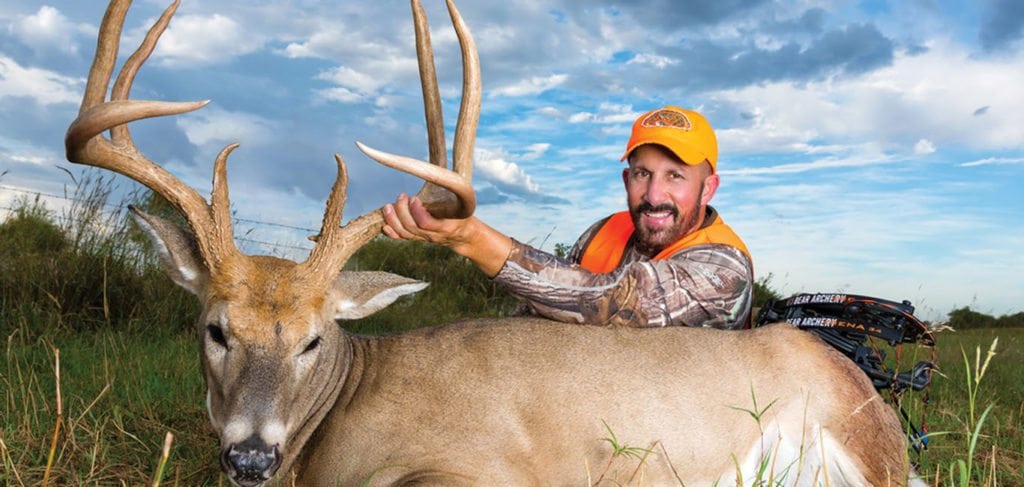Written by Dan Perez | Courtesy of Realtors® Land Institute and Whitetail Properties Real Estate
At one time the value of land was primarily based on the fertility of the soil, maturity of the timber or the minerals beneath the surface. But today there is another asset that will not show up on a property appraisal sheet, yet represents a huge value to many outdoorsman. I’m talking about the quality of the wildlife that inhabits a particular tract of land.
There is one animal in particular that generates more revenue than all God’s wild creatures on earth put together and that is the whitetail deer. When you consider the billions of dollars hunters pump into the economy every year by purchasing licenses and tags, lodging, fuel, hunting equipment, food plot equipment, recreation and utility vehicles, seed, fertilizer, camouflage clothing, attractants, and land for the single purpose of hunting the allusive whitetail deer it is absolutely astonishing! There are many businesses in the US and even entire towns in the Midwest that would go bankrupt and blown away if this majestic beast were gone.
Very often a savvy investor might purchase the least desirable home in a very up scale neighborhood. He does this because he figures, even after he spends money on improving the property he will still have far less invested in the purchase than what that property will be worth after improvements. This is a great way to purchase equity. By comparison, if you research areas that have historically produced record book bucks then employ the services of a licensed real estate land specialist to help you narrow your search, you can apply the same principals. You see, by finding a tract of land with the least desirable whitetail habitat (an example would be an old cattle ranch) in an area where big bucks are common and then by transforming that land to prime whitetail habitat you will accelerate appreciation and grow equity.
These are the steps I take after purchasing that perfect property: First I start by strategically laying out the property on an aerial. I like to identify where it makes the most sense wind wise to put in food plots, bedding areas and watering holes or banks, Wild Water systems, as well as access roads, gates, and fences. As it relates to food plots, my rule of thumb is to put in at least 10 percent of the farm in food plots: Two-thirds of the plots in perennials and one-third in annuals. Next, my goal is to build cover: In the timber areas my plan is to thicken the understory as well as create densely obscure edges. I do this by feather cutting the timber along the edges of the fields and selectively hinge cutting some of the less desirable trees in the interior. This allows sunlight to reach the forest floor thus allowing new growth to sprout. Not to mention, the trees that are hinged over are still alive so now every limb grows on the sun facing side of the trunk thus creating much more dense cover at eye level. From there I work on converting cool season grassy areas into early successional plants by spraying the grassy areas with an herbicide then control burning these areas. This is a great way to provide more cover and food at same time. It is often amazing how many seeds/plants have been lying dormant for years under the thatch. If you’re not familiar with burning, spraying or cutting, don’t worry there are plenty of experts out there that you can hire. A great way to learn is to hire an expert then serve as his apprentice. You will learn far more from that experience than attending a seminar. There is an excellent book on the market right now called “A Guide to Wildlife Food Plots and Early Successional Plants.” This book is written by Craig Harper and it is the single most comprehensive book on the subject that I have ever read.
You’ve heard it before, “build it and they will come” and indeed they will. The improvements alone have already increased the value of your property, but now the key is to build a prospectus by documenting the quality of whitetails that inhabit your farm. It is amazing how in three or four short years you can really make a difference. The best way I know to build a prospectus is with trail camera pictures and by keeping an album of mature animals that have been harvested on your farm.
I’ve been involved with many farms that have sold for twice as much per acre than similar farms in the same county simply because they had documented history of producing big bucks. But at the end of the day the true value of purchasing a farm and building a quality whitetail paradise are the memories you build with your family and friends on your slice of God’s creation.

